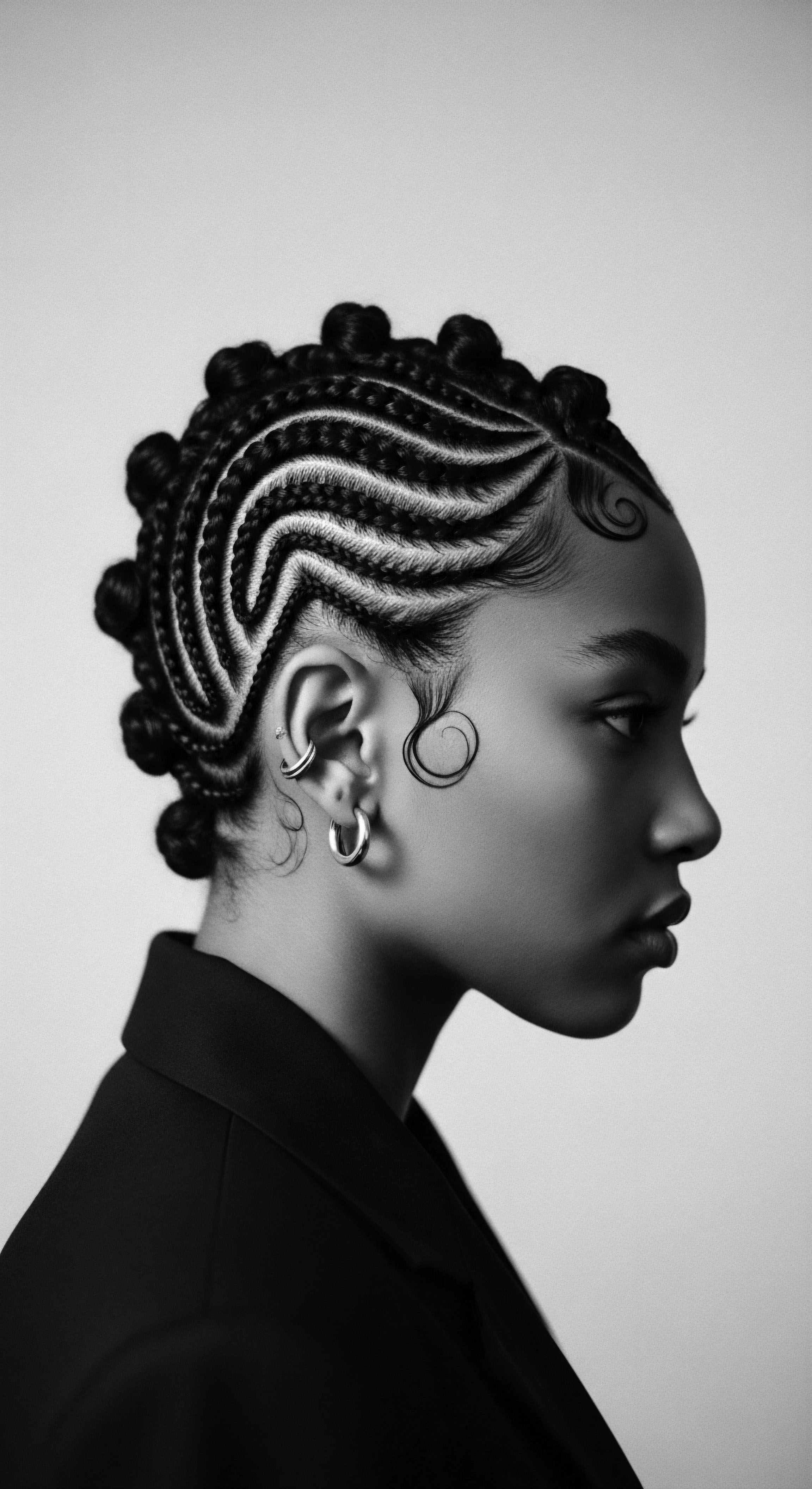
Roots
For generations beyond counting, the very coils and kinks that crown our heads have been far more than mere biological extensions. They are, for those of us with textured hair, living archives, whispering the sagas of our ancestors and standing as enduring testaments to identity, spirit, and resilience. This exploration journeys through time, tracing how ancient practices affirmed the spirit of textured hair across generations, revealing the profound heritage etched into every strand. We come to understand that the hair we carry today bears the wisdom of countless hands that came before ours, meticulously caring, adorning, and honoring what springs from the scalp.
The intricate relationship between textured hair and communal identity is not a modern construct; its roots reach back into the primal rhythms of earliest civilizations. In various African societies, hair acted as a visual lexicon, communicating complex details about an individual’s place in the world. It conveyed marital status, age, community role, and even spiritual allegiances. This was a language spoken through coils and braids, a silent yet potent affirmation of belonging.

What Ancestral Hair Says About Us
Consider the pre-colonial African societies where hair was a central marker of self. Here, the unique structure of Afro-textured hair, with its tightly coiled strands and distinctive follicle shape, was not simply a biological fact. It was a canvas for communication, a medium for expressing social standing and life stage. From the elaborate braided crowns of the Mangbetu people in Congo, which symbolized wealth and position, to the specific styles worn by the Yoruba in Nigeria, indicating community roles, hair was an undeniable aspect of public and personal narrative.
Even tools carried historical weight. Combs, meticulously carved from wood, featured designs that spoke volumes about tribal affiliation, personal history, and social class long before the transatlantic slave trade distorted these traditions. These tools, with their long teeth and rounded tips, were thoughtfully designed to manage coiled hair, underscoring an indigenous understanding of textured hair needs.
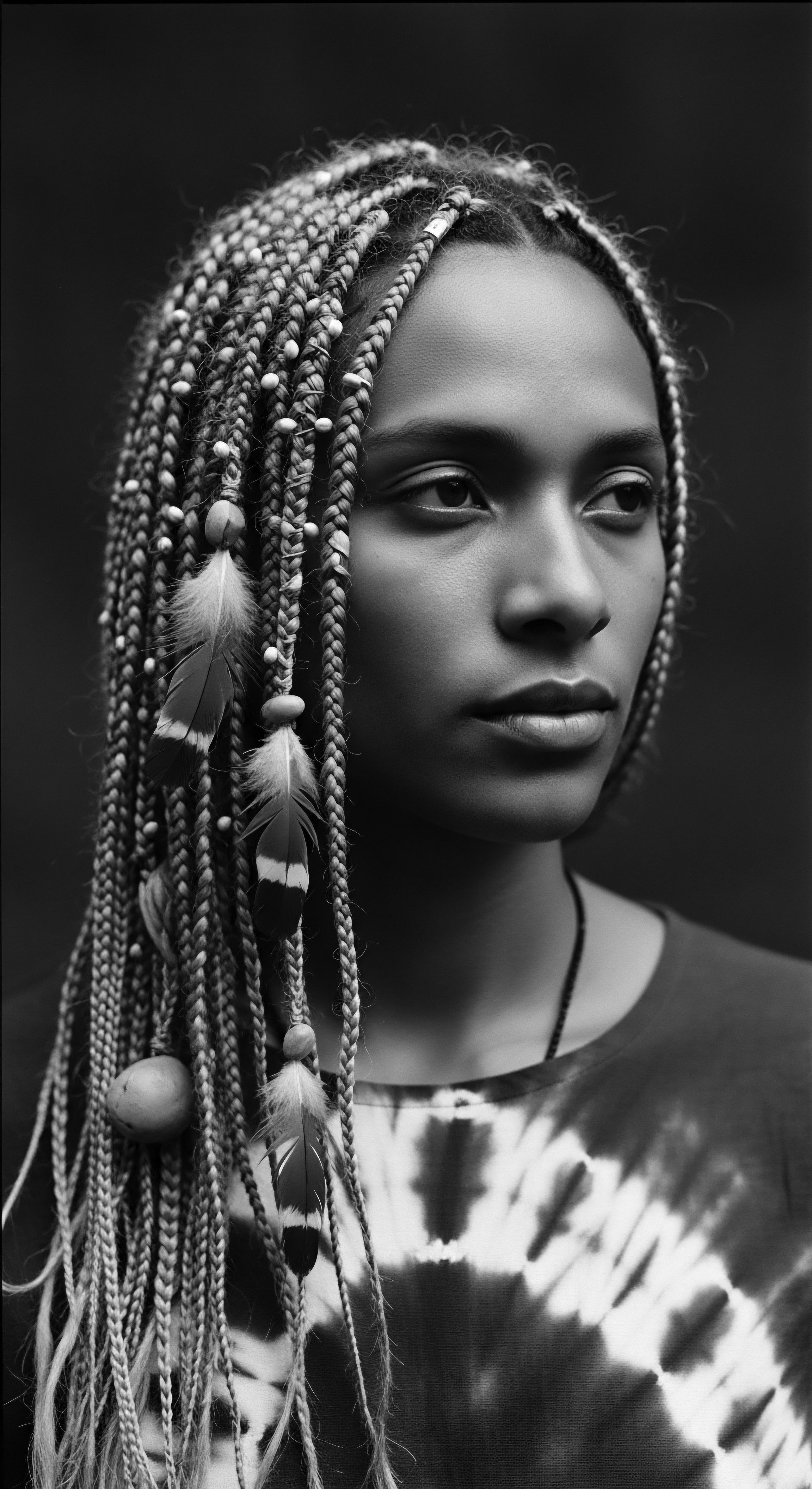
How Do Hair Anatomy and Physiology Reflect Ancestral Wisdom?
Modern trichology offers detailed insights into the helical structure of textured hair, its elliptical cross-section, and the unique curvature of the hair follicle. These biological aspects contribute to the hair’s characteristic coils and its density. Yet, ancient cultures, without microscopes or genetic sequencing, intuitively understood the behaviors of these strands.
They observed how different curl patterns responded to moisture, how they coiled when dry, and how they could be manipulated into protective styles. This deep observation formed the basis of traditional care practices, passed down through oral traditions and hands-on teaching within families and communities.
Textured hair, beyond its biology, carries the historical echoes of ancient practices that served as vital markers of identity and community belonging.
The classifications of textured hair, often discussed in contemporary contexts with numerical grading systems, find a parallel in the ancient world’s practical recognition of hair types. While not formalized in a scientific rubric, traditional communities inherently understood the variations in hair texture and developed specific styling methods and botanical preparations tailored to different curl patterns. A strong, thick head of hair, for example, was admired in West African communities and seen as a symbol of life force, prosperity, and the ability to produce bountiful harvests and healthy children. This holistic view connected hair health directly to the individual’s vitality and their contribution to the collective.
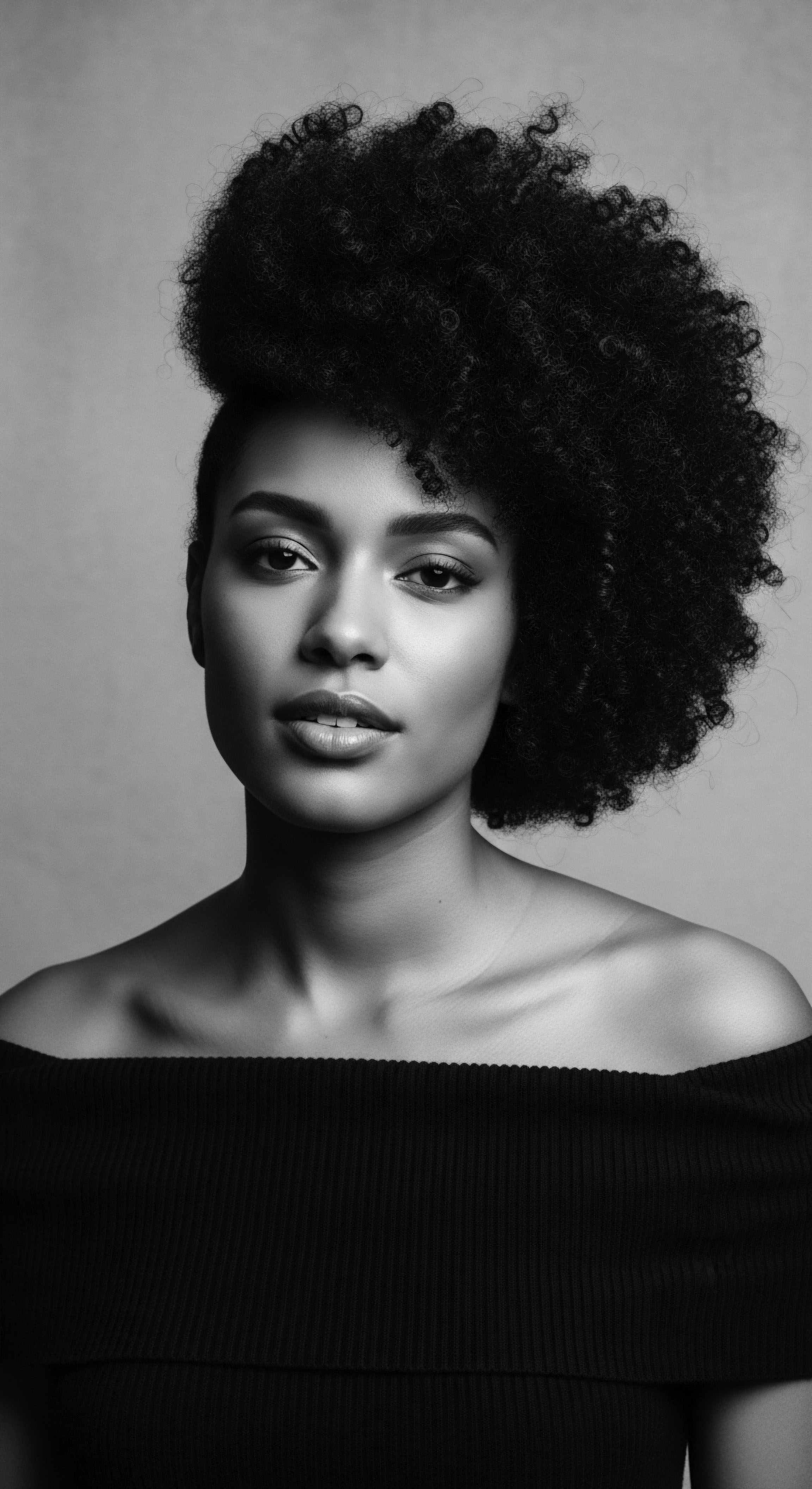
Ritual
The ritualistic care of textured hair stretches back millennia, a practice interwoven with social gatherings, spiritual rites, and the very fabric of daily life. These were not simply acts of beautification; they were sacred ceremonies, opportunities for intergenerational knowledge transfer, and powerful affirmations of self within a collective. The manipulation of coils, twists, and braids created a language of adornment, each style communicating a wealth of information about the wearer’s journey through life and their connection to their heritage.

What Story Does Each Hair Style Tell Through History?
The lexicon of textured hair styling is a testament to cultural endurance. Braiding, for instance, has origins tracing back to 3500 BCE in Africa, with ancient rock paintings depicting women with cornrows. These patterns were far from arbitrary.
In African societies, braids could signify age, marital status, wealth, kinship, and spiritual beliefs. The Mblanta people of Namibia, for example, wore incredibly long braided hair, changing its adornment as they progressed through life’s stages.
During the transatlantic slave trade, when deliberate attempts were made to strip enslaved Africans of their heritage, hair care became an act of profound resistance and survival. Captors often shaved the heads of enslaved individuals, aiming to erase their cultural identity. Yet, in the face of such brutality, ancient hair practices persisted in ingenious ways. Enslaved women, particularly rice farmers, braided rice seeds into their hair as a means of survival, smuggling grain from their homeland into new, foreign lands.
Braiding patterns also served as coded maps, guiding escape routes and communicating safely between individuals seeking freedom. This secret communication, deeply rooted in traditional African hair artistry, allowed for acts of defiance that saved lives and kept hope alive.
Protective styles, such as cornrows, twists, and Bantu knots, served practical purposes alongside their cultural significance. They guarded delicate strands against harsh conditions, especially during demanding labor on plantations. These styles, originating from practices developed over centuries in African climates to preserve hair health from sun damage and drying winds, continued to offer solace and function in oppressive environments.
| Ancient Styling Technique Braids (Cornrows, Plaits) |
| Historical Cultural Significance Visual communication for age, tribe, marital status, wealth, spiritual beliefs; also served as covert maps during slavery. |
| Modern Heritage Connection Symbols of Black pride, cultural heritage, and resilience; a means of expression and connection to ancestral practices. |
| Ancient Styling Technique Dreadlocks (Locs) |
| Historical Cultural Significance In some African societies, indicated strength, higher power, or warrior status; spiritual connection. |
| Modern Heritage Connection Emblem of Rastafari movement, rejection of Eurocentric norms, and assertion of cultural identity and spiritual grounding. |
| Ancient Styling Technique Bantu Knots |
| Historical Cultural Significance Traced back to the Bantu-speaking communities; a protective style signifying femininity and beauty, especially in Zulu culture. |
| Modern Heritage Connection Celebrated for their protective qualities and sculptural artistry, honoring a legacy of diverse African styling. |
| Ancient Styling Technique Head Wraps |
| Historical Cultural Significance Indicated social status, humility, and femininity; protected hair. |
| Modern Heritage Connection Continued as a fashion statement, a sign of cultural pride, and practical hair protection, carrying ancestral memory. |
| Ancient Styling Technique These practices, spanning continents and centuries, highlight the enduring power of textured hair styling as a vessel for heritage and personal expression. |

What Ancient Tools Served as Instruments of Identity?
The tools employed in ancient hair styling were not merely utilitarian. They held cultural meaning and were often objects of art themselves. Combs, crafted from wood, bone, or horn, were meticulously designed with functionality for coiled hair, boasting long teeth and rounded tips.
These weren’t mass-produced items; they were often handcrafted, embodying the maker’s skill and the user’s social standing. The history of the Afro comb, for instance, spans 6,000 years, with examples from pre-dynastic Egypt demonstrating similarities in form and diverse designs across Africa and the diaspora.
Ancient hair rituals, a tapestry of intricate styling and communal bonding, served as powerful acts of cultural preservation and defiance in the face of adversity.
The shared act of hair grooming was a profound social event. In many traditional cultures, communal grooming sessions provided spaces for women to socialize, share confidences, tell stories, and strengthen community bonds. This intergenerational exchange of knowledge and wisdom was central to preserving heritage.
It was during these intimate moments that the intricate techniques of braiding, twisting, and adornment were passed from elders to younger generations, ensuring the continuity of cultural practices. The practice of hair dressing, therefore, was not a solitary act but a deeply communal one, solidifying familial and tribal ties.
Adornments, too, played a significant role. Beads, cowrie shells, gold threads, and natural fibers were interwoven into hairstyles, signifying wealth, social position, or religious devotion. These embellishments were not just decoration; they were extensions of the hair’s communicative power, adding layers of meaning to each elaborate style. Even now, such adornments carry echoes of these historical practices, connecting contemporary aesthetics to a rich ancestral past.

Relay
The continuum of textured hair heritage stretches beyond mere aesthetics or styling. It permeates the holistic care practices and problem-solving approaches that have been passed down through generations, often validated by contemporary scientific understanding. These ancestral wisdoms, deeply rooted in a profound understanding of natural ingredients and the unique needs of coiled and kinky strands, form the bedrock of enduring hair wellness philosophies.

How Did Ancestral Wisdom Inform Hair Regimens?
Ancient civilizations cultivated meticulous hair care regimens, many of which prioritized hair health and moisture retention, qualities that are crucial for textured hair. Rather than relying on commercial formulations, these communities turned to the natural world for their solutions. Ingredients such as shea butter, various plant-based oils, and specific herbs were staples in ancestral hair care, often used in their raw, unrefined forms.
For instance, the Basara tribe of Chad has a practice of applying an herb-infused oil and animal fat mixture, often called Chebe, to their hair weekly. This mixture, consisting of ingredients like lavender crotons, cherry seeds, and cloves, is renowned for increasing hair thickness and retaining moisture, balancing scalp pH, and possessing anti-inflammatory properties. This specific historical example powerfully illuminates the connection to textured hair heritage, Black experiences, and ancestral practices by demonstrating a scientifically sound approach to length retention and scalp health through traditional means (Alpert, 2020). The women apply this mixture and braid their hair, maintaining remarkable length, a direct testament to the efficacy of these time-honored methods.
Other traditional ingredients, such as Baobab Oil, a nutrient-rich extract from the African ‘Tree of Life’, were cherished for their ability to moisturize, strengthen, and protect hair from environmental damage. Rooibos, a South African tea, was valued for its antioxidants and minerals, supporting hair health and stimulating growth by improving scalp circulation. These botanical elements, sourced directly from the earth, formed the cornerstone of hair wellness, ensuring that the hair was not only beautiful but also nourished from within.
- Shea Butter ❉ Extracted from the nuts of the African shea tree, this butter has been used for centuries to moisturize and protect hair and skin, owing to its rich fatty acid profile.
- Coconut Oil ❉ A versatile oil, widely utilized across various cultures, for its deep penetrating moisture and strengthening properties, especially for coily textures.
- Castor Oil ❉ Particularly Jamaican Black Castor Oil, valued for its ability to promote hair growth by stimulating scalp circulation and strengthening strands.
- Neem ❉ This ‘miracle tree’ herb is celebrated for its antifungal and antibacterial properties, essential for maintaining a healthy scalp environment conducive to hair growth.
- Sesame Oil ❉ Promotes hair growth by penetrating the scalp and improving blood circulation; also protects hair from UV rays and treats scalp conditions.

What Role Did Nighttime Care Play in Ancestral Hair Rituals?
The ritual of nighttime hair protection, particularly the use of head wraps and bonnets, possesses a long and layered history. While modern bonnets are often associated with convenience and preserving styles, their historical counterparts, Head Wraps and Turbans, served profound cultural and practical purposes across various African and diasporic communities. These wraps protected hair from the elements, especially during arduous labor, and preserved intricate styles between lengthy styling sessions.
Generational wisdom, passed down through the ages, reveals ancestral hair care regimens that blend natural ingredients with intuitive understanding of textured hair needs.
In many African villages, the patterns and colors of hair wraps could symbolize a person’s tribe or their social standing. In West Africa, headwraps were expressions of femininity and could communicate social status based on how they were tied. For enslaved Africans in the Americas, headwraps became a symbol of dignity and resilience, a subtle act of defiance against imposed beauty standards.
They protected hair and preserved cultural heritage, allowing individuals to maintain a sense of self when much else was taken. The deep historical basis of the bonnet, therefore, stretches far beyond mere practicality, extending into realms of cultural preservation and quiet rebellion.
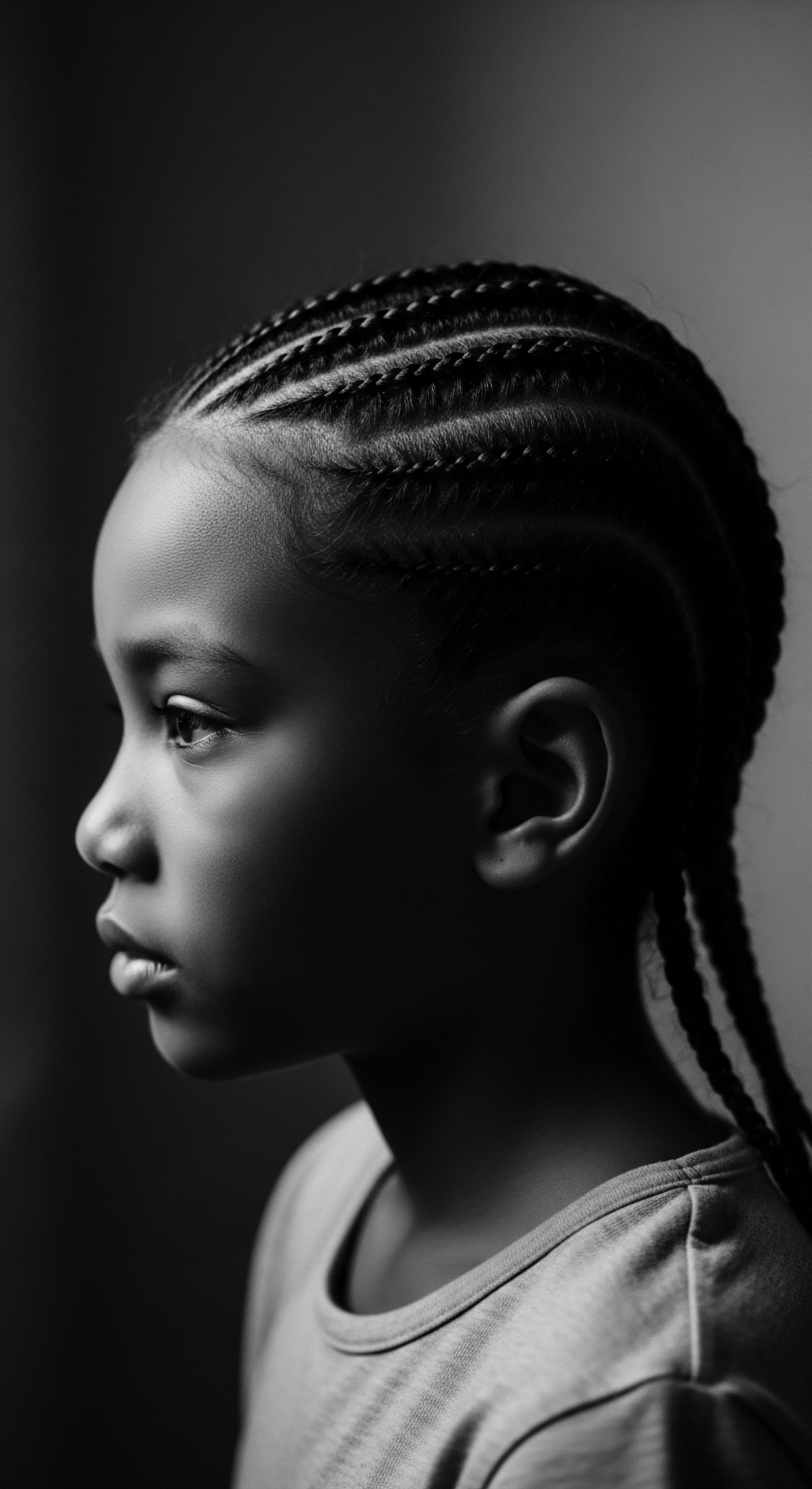
What Holistic Principles Guided Ancestral Hair Wellness?
The care of textured hair in ancient traditions was rarely isolated from overall wellbeing. It was, instead, a component of a larger, holistic philosophy that connected physical health, spiritual harmony, and community prosperity. Hair was viewed as a sacred conduit, linking individuals to their ancestors and the divine.
In Yoruba culture, for instance, hair was considered the most elevated part of the body, and braided styles were even used to send messages to the gods. This perspective lent an ethereal quality to hair care, elevating it beyond mere cosmetic concern to a spiritual practice.
When traditional hair care practices, often involving extensive time for washing, combing, oiling, and braiding, were undertaken, they were viewed as social opportunities—moments to strengthen familial and community bonds. This communal aspect of hair care, still present in many contemporary Black and mixed-race communities, speaks to a deeply ingrained understanding that hair is a shared heritage, a collective responsibility, and a source of connection. The knowledge of natural ingredients, styling techniques, and protective measures was not held by one individual but distributed amongst community members, ensuring its continuity and adaptation across generations. This collaborative approach underscores a wisdom that health, beauty, and identity are nurtured within a supportive communal environment.

Relay
The legacy of textured hair extends into our present, echoing ancient wisdom and adapting to contemporary landscapes. The enduring practices that affirmed textured hair identity across generations are not static relics but living, breathing traditions that continue to shape personal and collective narratives. The journey of textured hair, from its elemental biology to its deepest cultural meaning, unfolds as a story of perpetual return to the source, a vibrant relay of heritage through time.

How Do We Witness the Endurance of Ancient Practices Today?
The resonance of ancient hair practices is palpable in the modern natural hair movement. This contemporary awakening has seen a resurgence of traditional styles and a renewed appreciation for the innate characteristics of textured hair. The Afro, for example, which gained prominence during the Civil Rights Movement in the 1960s, became a powerful symbol of Black pride and resistance against Eurocentric beauty norms.
This historical moment reflects a deliberate choice to reconnect with ancestral aesthetics, transforming hair into a political and cultural statement of self-acceptance and defiance. The Afro was not a new invention; it was a reclamation of a natural form that had long been suppressed.
The shift towards embracing natural textures, away from chemical straightening, represents a modern validation of long-held ancestral beliefs about hair health and identity. This movement, deeply rooted in the concept of self-definition, encourages individuals to accept their hair as it grows, a practice that echoes the reverence for natural hair in pre-colonial African societies. Studies have shown a significant rise in natural hair wearers, with estimates indicating that between 30% and 70% of Black women in the United States wear their hair naturally, including 79% of millennial Black women younger than 30 years (Brydie, 2021 as cited in). This statistic speaks volumes about the enduring influence of heritage on contemporary choices.
- Reclamation of Natural Aesthetics ❉ The modern natural hair movement directly reflects a return to the appreciation of natural textures, drawing inspiration from ancient African hairstyles and beauty standards.
- Revival of Traditional Techniques ❉ Braiding, twisting, and locing techniques, passed down through generations, are actively practiced and innovated upon today, maintaining a continuous link to ancestral artistry.
- Emphasis on Holistic Hair Health ❉ A growing recognition of the value of natural ingredients and gentle care methods mirrors the ancestral focus on nourishing hair from the earth, fostering long-term wellness.
- Hair as Cultural Expression ❉ Textured hair continues to be a powerful medium for cultural expression, identity affirmation, and connection to collective history, serving as a visual marker of belonging and resilience.
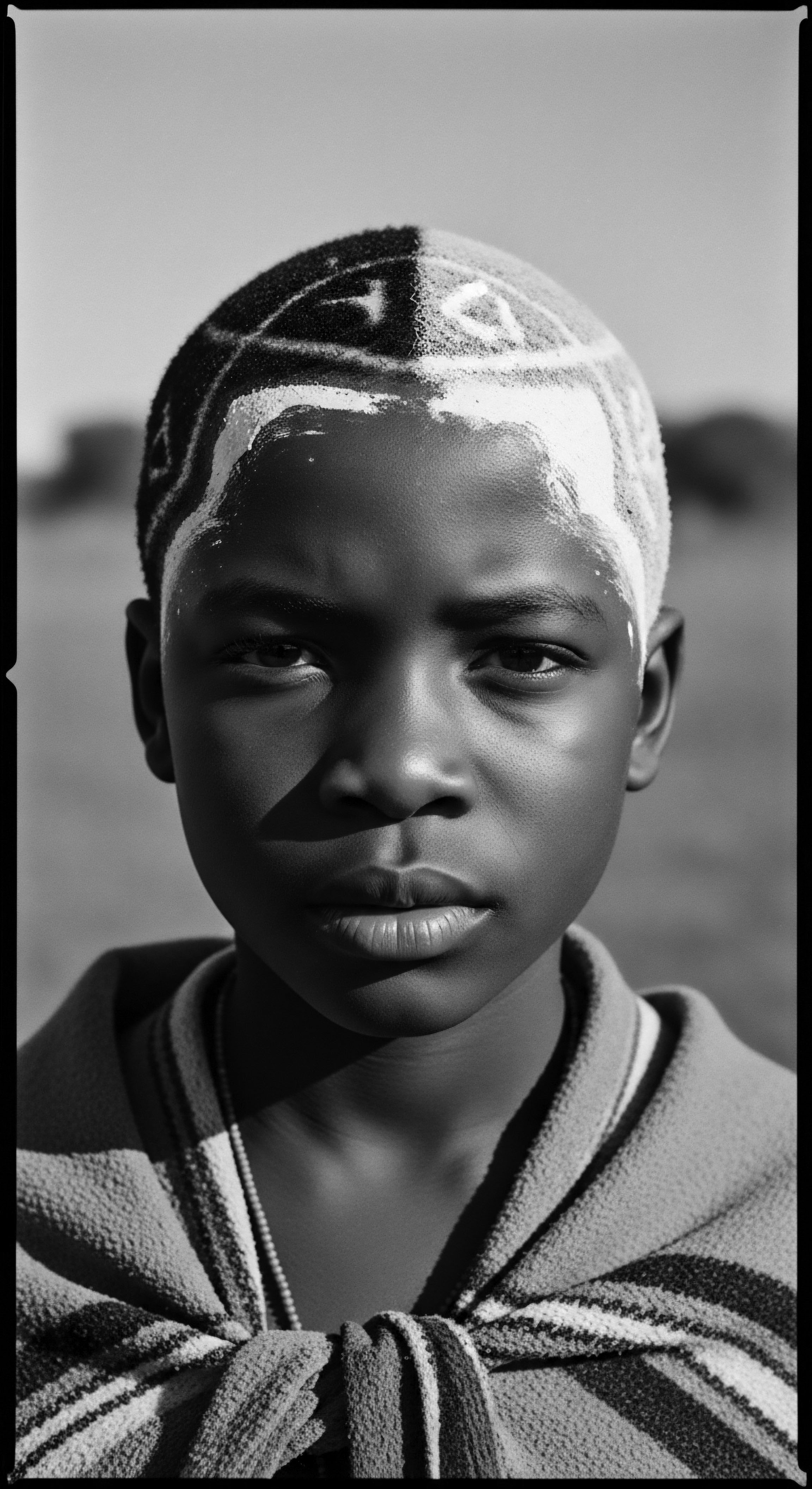
What Deeper Cultural Context Explains Current Hair Narratives?
The ongoing discourse surrounding textured hair often carries the weight of historical struggles. The imposition of Eurocentric beauty standards during colonization and slavery profoundly impacted perceptions of Black hair, leading to its systematic devaluation. This historical trauma meant that for generations, straight hair was presented as the epitome of beauty, influencing self-perception and societal acceptance. Yet, even through these oppressive periods, a memory of traditional practices persisted in the diaspora.
The act of caring for textured hair, then and now, extends beyond physical maintenance. It becomes an act of self-love, a spiritual healing, and a reclamation of personal agency against narratives of diminishment. The deliberate choice to wear textured hair in its natural state, or in styles that honor its ancestral lineage, is a powerful form of resistance. It challenges societal norms and reaffirms the inherent beauty and worth of Black and mixed-race aesthetics.
The very process of navigating and expressing textured hair identity today is, in many ways, a continuation of ancient dialogues between self, community, and heritage. It embodies a cosmology where the divine feminine is vibrant and powerful, and where hair serves as a testament to lineage and resilience. This connection to ancestral practices acknowledges that the Black woman is not merely a worshipper but a manifestation of divine femininity, despite historical attempts to devalue her sacredness.
| Traditional Practice/Principle Communal Hair Grooming (social bonding, knowledge transfer) |
| Modern Application/Validation Shared hair care rituals among family/friends; online natural hair communities offering support and advice. |
| Traditional Practice/Principle Use of Natural Butters and Oils (for moisture retention, protection) |
| Modern Application/Validation Popularity of shea butter, coconut oil, castor oil, and other plant-based products in modern textured hair regimens. |
| Traditional Practice/Principle Protective Styling (preserving length, guarding against elements) |
| Modern Application/Validation Continued reliance on braids, twists, locs, and weaves for hair health and versatile styling. |
| Traditional Practice/Principle Hair as Identity Marker (social status, spiritual connection) |
| Modern Application/Validation Natural hair movement as a political statement; CROWN Act legislation protecting hair-based discrimination. |
| Traditional Practice/Principle The enduring wisdom of ancestral hair practices provides a timeless framework for understanding and honoring textured hair today. |
The concept of hair as a “crown of glory,” a teaching passed down through generations, still resonates deeply within Black communities. This phrase encapsulates the historical reverence for textured hair and its enduring significance beyond superficial appearance. It speaks to the inner strength and self-esteem that comes from embracing one’s authentic strands, linking contemporary identity back to a powerful ancestral narrative. The continued societal biases against textured hair, though evolving, underscore the ongoing need for these affirmations, making the relay of ancient practices a vital act of cultural preservation.

Reflection
The journey through the heritage of textured hair reveals a lineage of profound wisdom, resilience, and unwavering identity. From the very first coil that sprung from the scalp, hair has been a living testament, a silent orator of stories stretching back to the dawn of time. Our textured hair, with its intricate patterns and remarkable versatility, is more than just biology; it is a profound meditation, a living archive carrying the ‘Soul of a Strand’ from elemental source to future possibilities. The ancient practices that affirmed its identity across generations echo not as distant whispers but as a vibrant, pulsing rhythm within us.
This enduring connection reminds us that to care for our textured hair is to honor a sacred trust, to acknowledge the countless hands that have tended, styled, and celebrated these strands, and to carry forward a legacy of self-acceptance and communal strength. It is a continuous act of remembering, of living history, and of crafting a future where every curl, coil, and kink is recognized for the profound beauty and heritage it holds.
References
- Byrd, A. D. & Tharps, L. (2001). Hair Story ❉ Untangling the Roots of Black Hair in America. St. Martin’s Press.
- Jacobs-Huey, L. (2006). From the Kitchen to the Salon ❉ Language and Cultural Coherence in Black Women’s Hair Care. Oxford University Press.
- Mercer, K. (1994). Welcome to the Jungle ❉ New Positions in Cultural Politics. Routledge.
- Patton, T. O. (2006). Building Better Bodies ❉ Gender, Sexuality, and the Class in the African American Beauty Culture. Rutgers University Press.
- Rooks, N. M. (1996). Hair Raising ❉ Beauty, Culture, and African American Women. Rutgers University Press.
- Alpert, A. (2020). Chebe Powder for Hair Growth ❉ What You Need to Know. Allure. (Cited indirectly through search snippet referencing this as a source for Chebe effectiveness).
- Johnson, T. & Bankhead, T. (2014). Hair It Is ❉ Examining the Experiences of Black Women with Natural Hair. Open Journal of Social Sciences, 2(1), 86-100.
- Banks, I. (2000). Hair Matters ❉ Beauty, Power, and Black Women’s Consciousness. New York University Press.
- Chapman, K. (2003). Hair ❉ A Cultural History of Hair Fashion and Adornment. Harry N. Abrams.
